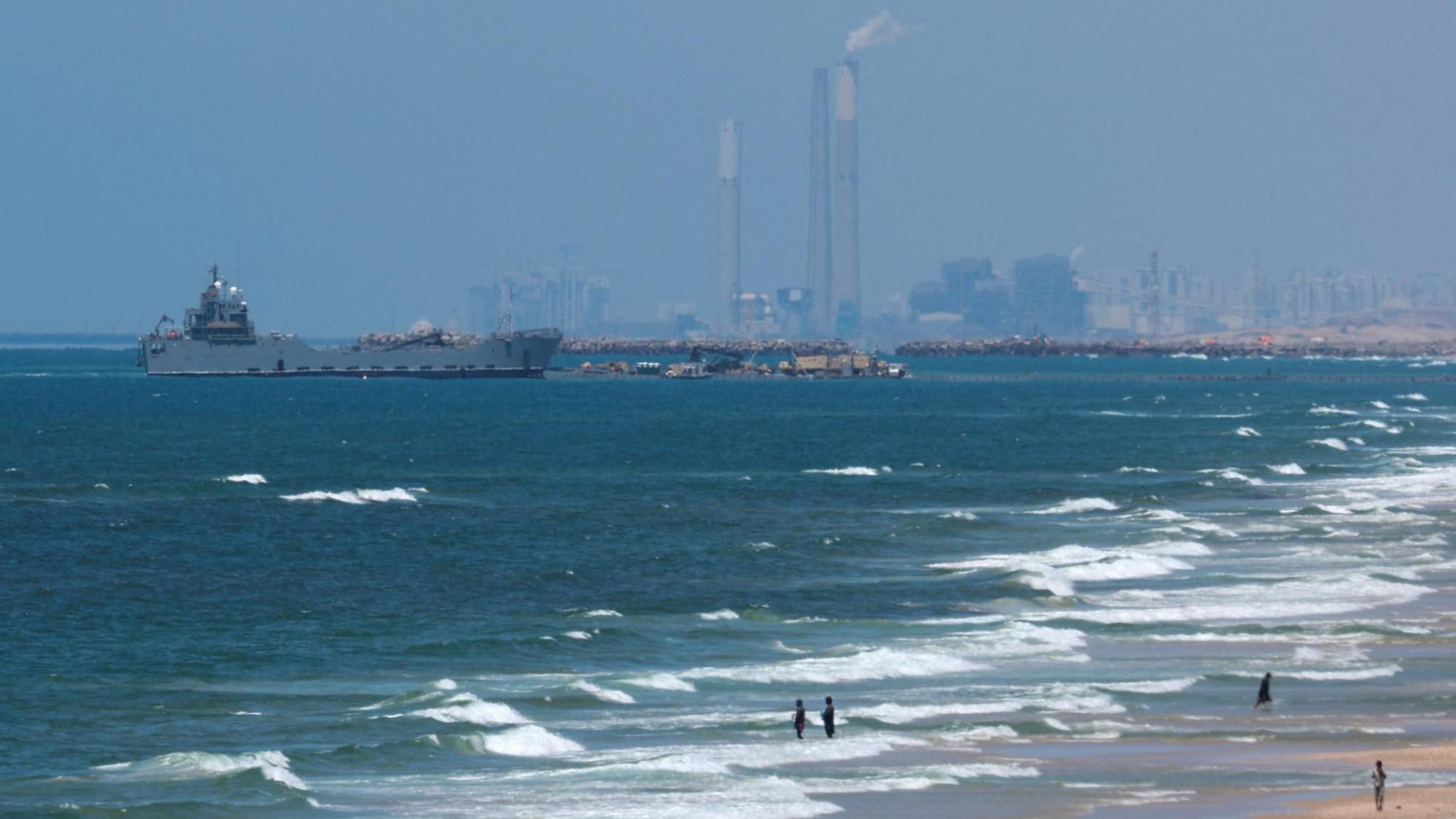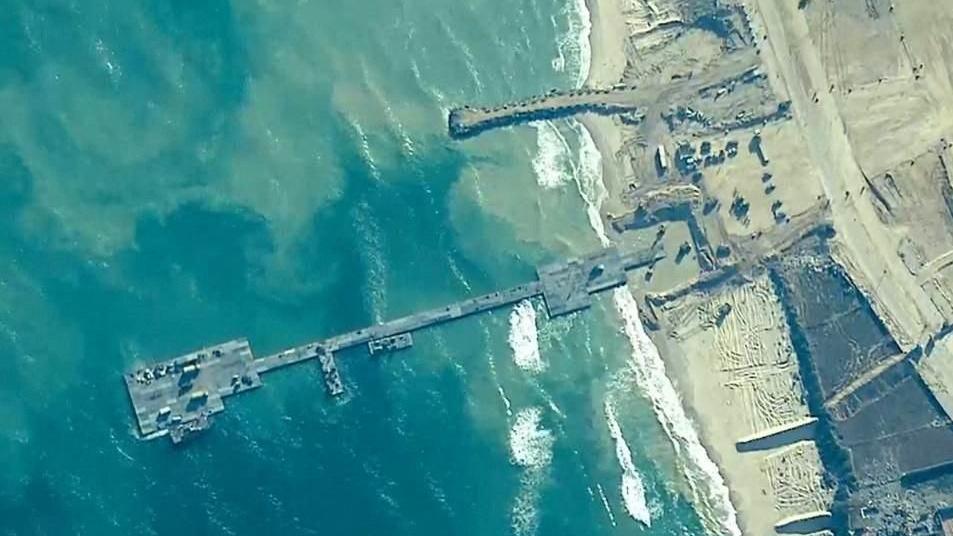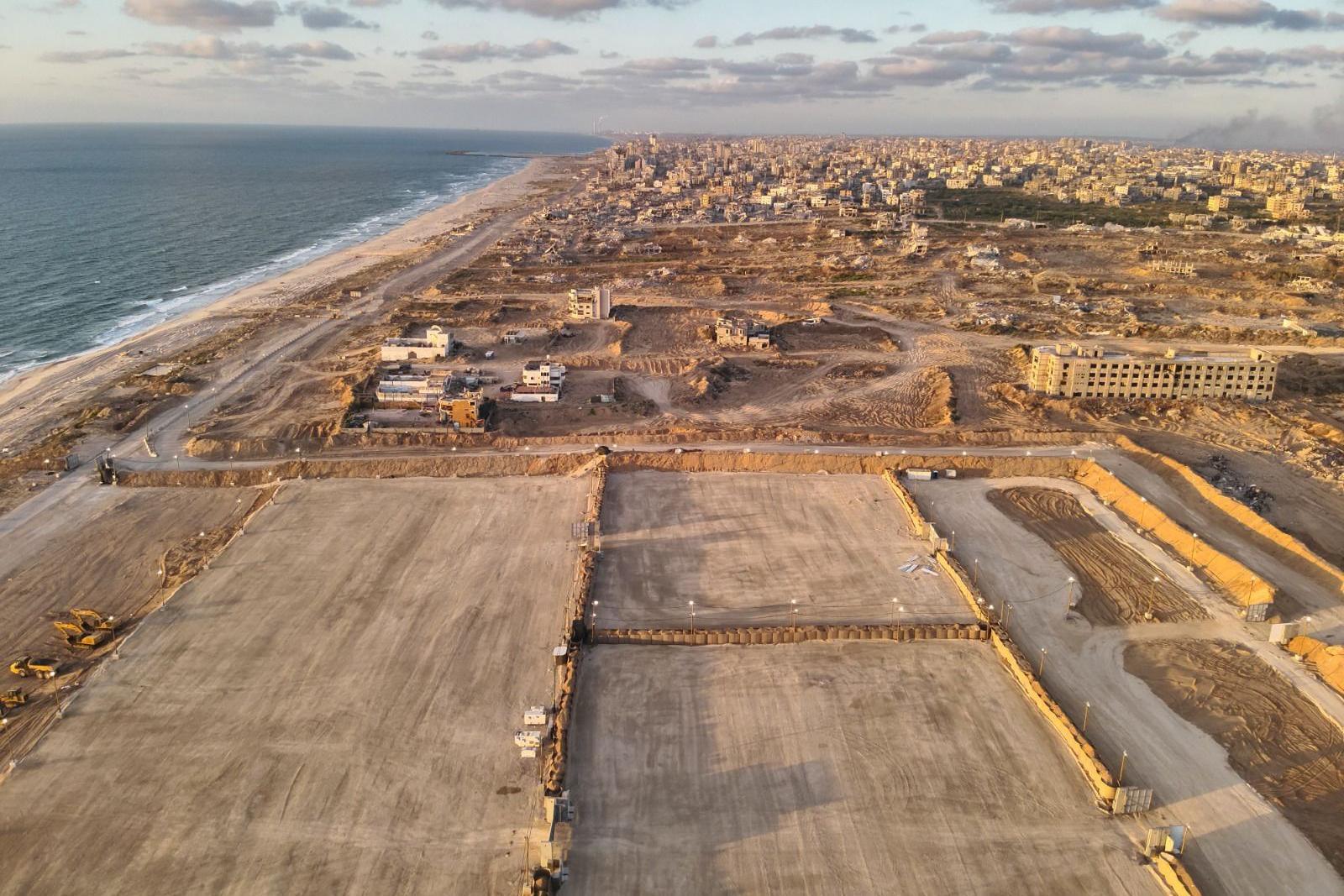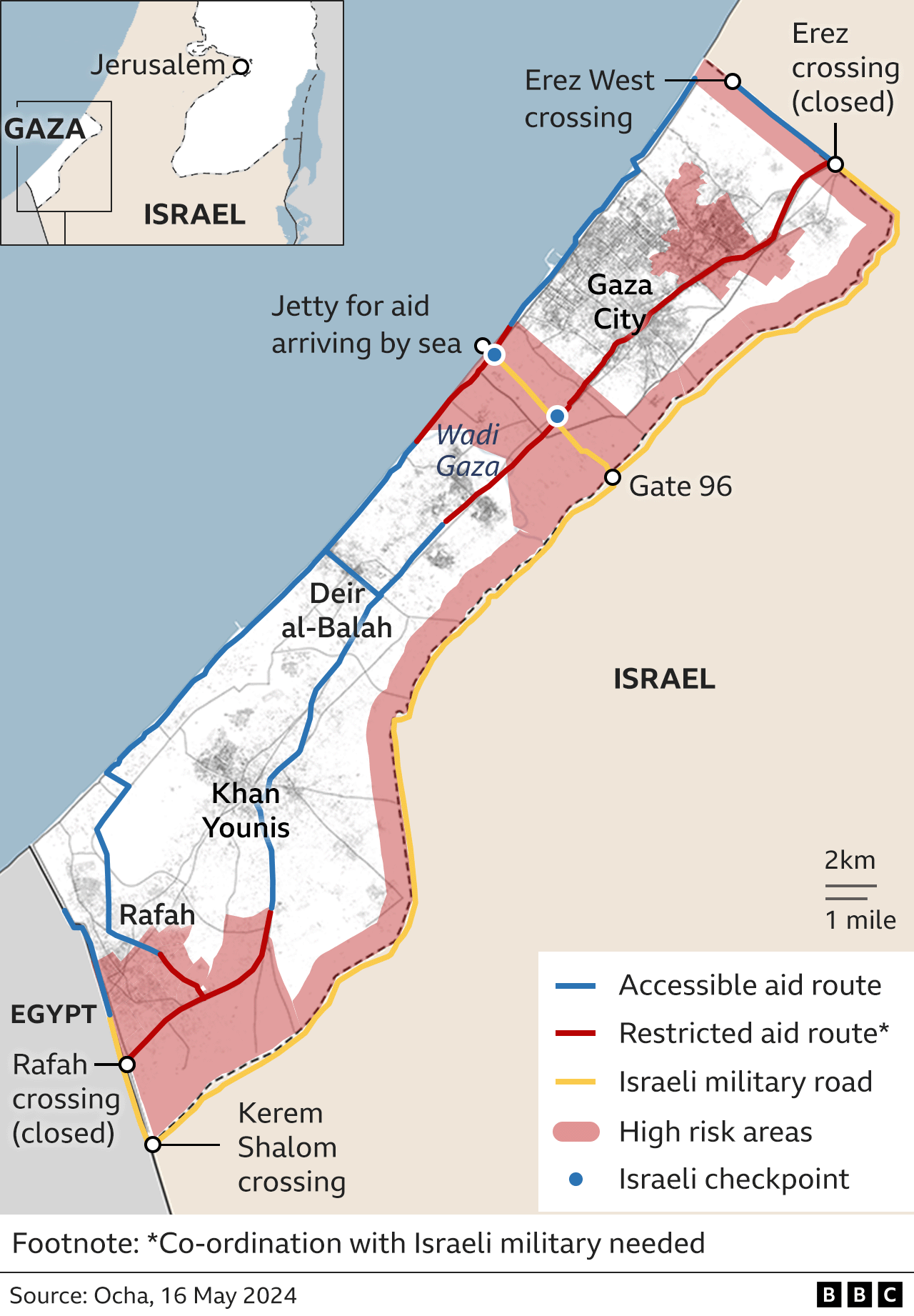Can US floating pier improve Gaza’s critical aid pipeline?

A military vessel was seen on Thursday in the sea next to pier that will be used to bring aid ashore to Gaza
- Published
Gaza’s latest aid corridor is about to open.
With some of the key land crossing points still closed, an ambitious American maritime corridor is due to start operating in the coming days.
With 2.2 million Palestinians in need of food, shelter and other assistance, how much difference will it make?
Early on Thursday morning, a temporary pier, several hundred metres long, was attached to the beach just south of Gaza City.
Several miles offshore, a large floating platform has already been anchored, ready to receive the first shipments of aid from a staging post in Cyprus, 200 miles (320km) to the north.
US officials say the first 500 tonnes of assistance will arrive soon, with thousands more to follow.

Aerial photos showed the pier being constructed on Thursday
Because of the shallowness of the waters off the Gaza Strip, pallets of aid will be transported to the floating platform before being ferried to the pier aboard logistics support vessels (LSVs), capable of carrying up to 15 lorries each.
Fleets of lorries will ferry the aid ashore to a large marshalling yard prepared and guarded by the Israeli military.
From there, aid agencies - primarily the World Food Programme - will be responsible for distributing supplies across the Gaza Strip.
Vice-Adm Brad Cooper, deputy commander of US Central Command, said he initially expected to see about 90 lorries a day delivering aid via the maritime route, known as a Joint Logistics Over-The-Shore (JLOTS) capability.
He said this figure would rise to 150 lorries a day.
“We have high expectation,” he told reporters on Thursday, while making it clear that JLOTS are no substitute for properly functioning land corridors.

The Israeli military says it has made extensive preparations on Gaza's coast to receive the floating pier
With Israel’s military operation around Rafah now in its 11th day, almost no aid is getting in through the south.
Israel has recently opened crossing points into the north, but everyone agrees that the quantity of aid reaching 2.2 million desperate Gazans is still far from adequate.
“The humanitarian environment in Gaza has become a lot more complex in the last two weeks,” said Sonali Korde from USAID’s Bureau for Humanitarian Assistance.
“The maritime corridor is absolutely essential in helping meet this gap in need.”
“This is all hands on deck,” Ms Korde said. “We can’t spare any effort.”
US says floating pier for aid anchored to Gaza beach
- Published16 May 2024
Inside the US plan to get food into Gaza by sea
- Published13 March 2024
But given the threats faced by aid convoys, which have been looted by gangs, mobbed by desperate civilians, and shot at by the Israeli military, how safe will this operation be?
“Our assessment is clearly that we can operate safely under current conditions,” Vice-Adm Cooper said.
“We’ve worked very closely with the IDF [Israel Defense Forces] to develop a series of protocols and best practices.”
But following a series of episodes, including an Israeli drone strike on 1 April which killed seven aid workers from the organisation World Central Kitchen, officials admit the wider operation is not without risk.
It’s one thing to bring aid ashore, quite another to ensure that it's safely distributed in places where fighting is still going on.
“The deconfliction measures are not where they need to be at, given the complexity of the environment,” Ms Korde said, referring to the procedures used to help keep aid workers out of harm’s way.
“Those conversations... need to get to a place where humanitarian aid workers feel safe.”

That certainly isn’t the case at the moment.
“It’s a highly insecure environment,” Georgios Petropoulos of the UN’s Office for the Co-ordination of Humanitarian Affairs (OCHA) said.
With the UN once again running out of fuel and drivers sometimes too frightened to show up for work, aid distribution remains perilous and patchy.
“It has to be part of a holistic logistical ecosystem,” Mr Petropoulos said.
For aid agencies, anything that improves the overall picture is welcome.
Most regard the JLOTS as an expensive, less efficient substitute for land corridors, and possibly fraught with risk.
But they seem willing to give it a chance.
“We should not be distracted by how things come into Gaza,” Mr Petropoulos said.
“The United Nations in Gaza will work to make sure that even the maritime corridor is a safe place from which we can help people.”

Many of the 600,000 Palestinians who have fled Rafah in recent days are now sheltering along the coast west of Khan Younis
The UN was able to move some of its existing supplies from warehouses in the south to help meet the needs of more than half a million Palestinians who have fled north from Rafah over the past 10 days.
But with the Rafah crossing with Egypt closed and the nearby Kerem Shalom crossing with Israel barely functioning, there’s a critical break in the aid pipeline.
The UN says 4,000 tonnes of food and other aid items remain stored in warehouses in areas subject to last week’s Israeli evacuation orders in eastern Rafah.
“It’s a matter of time before people realise that nothing more is coming,” Mr Petropoulos said.
The arrival of the JLOTS is timely, but it seems there’s only so much it can do to improve Gaza’s desperate humanitarian situation.